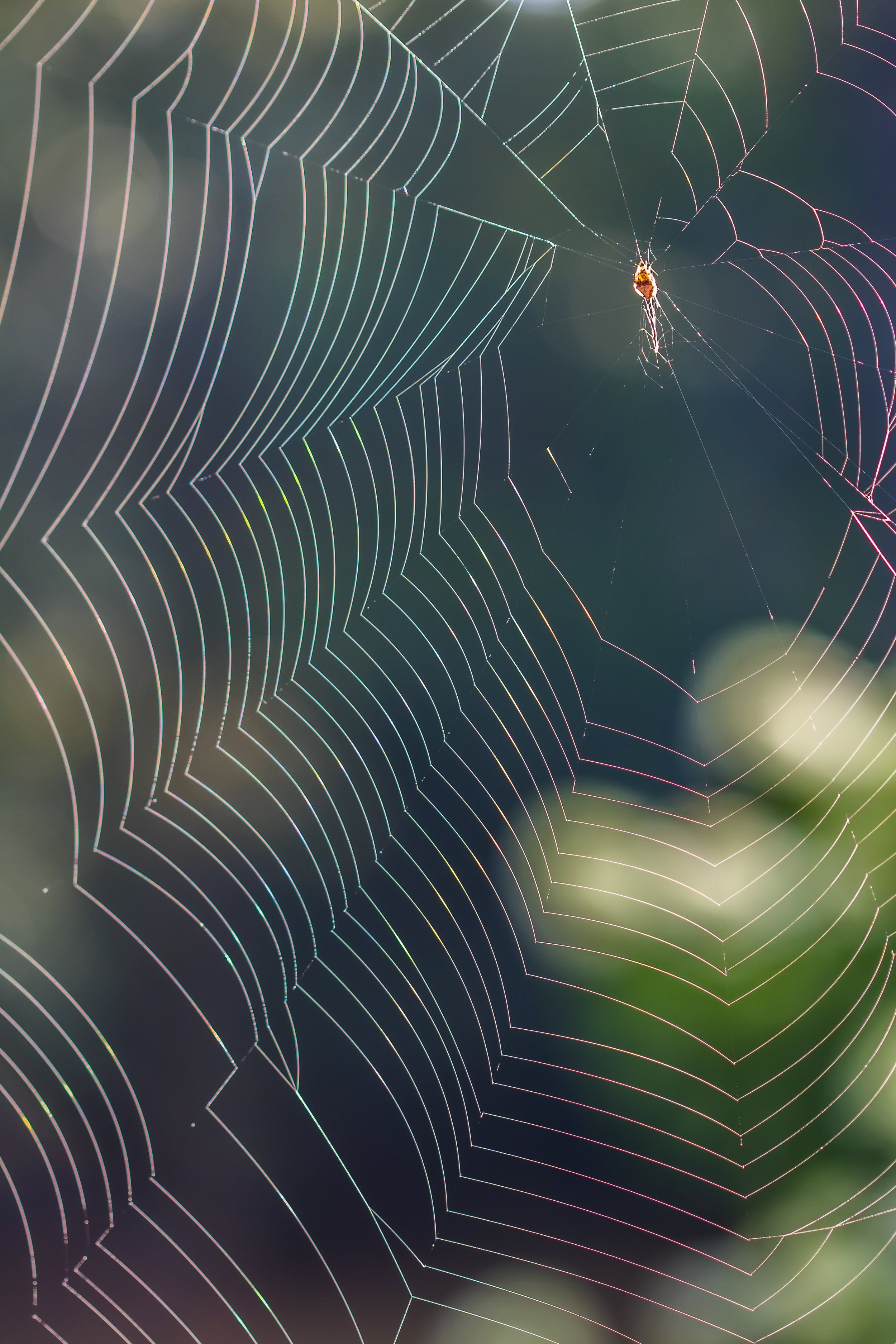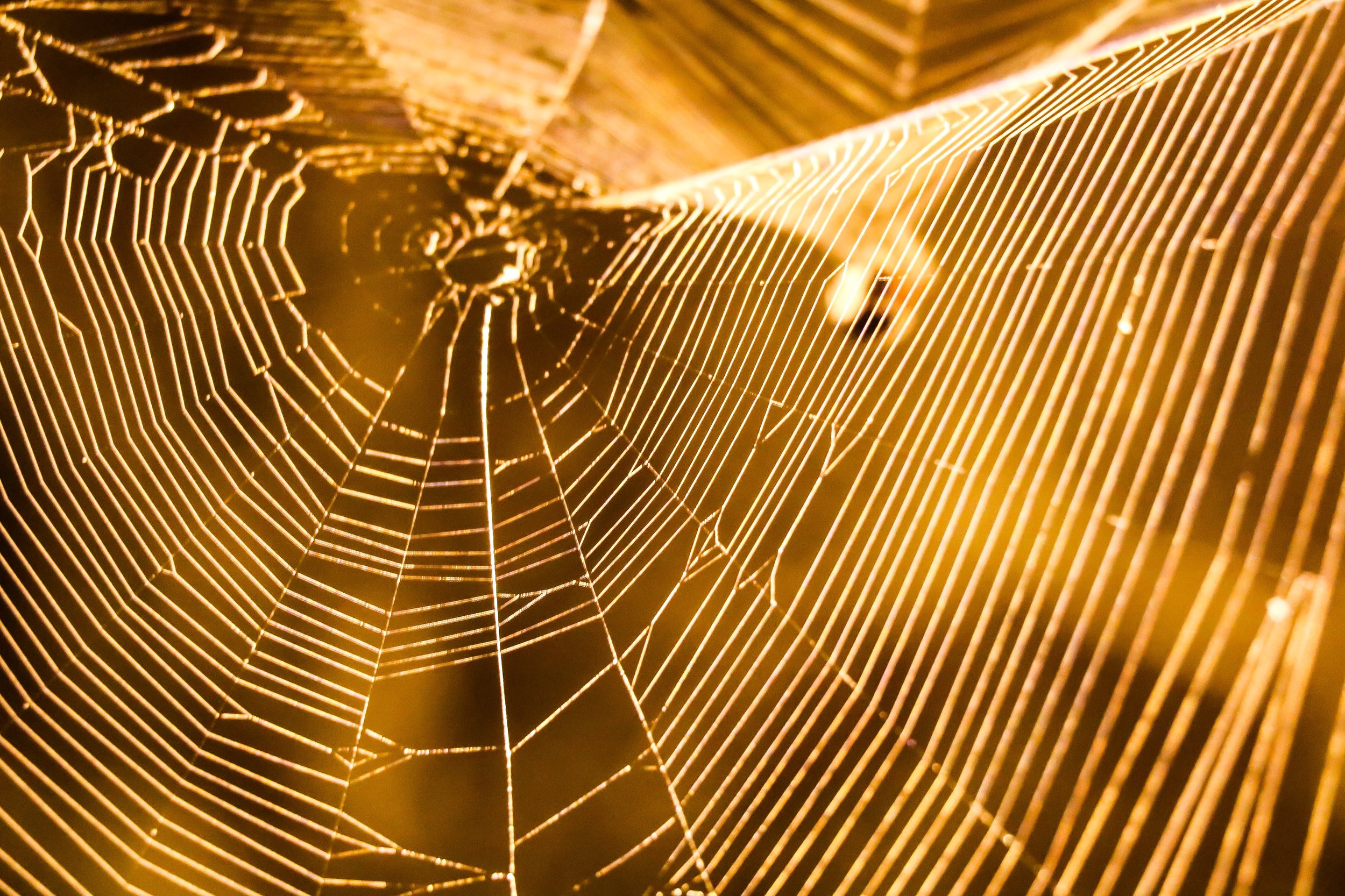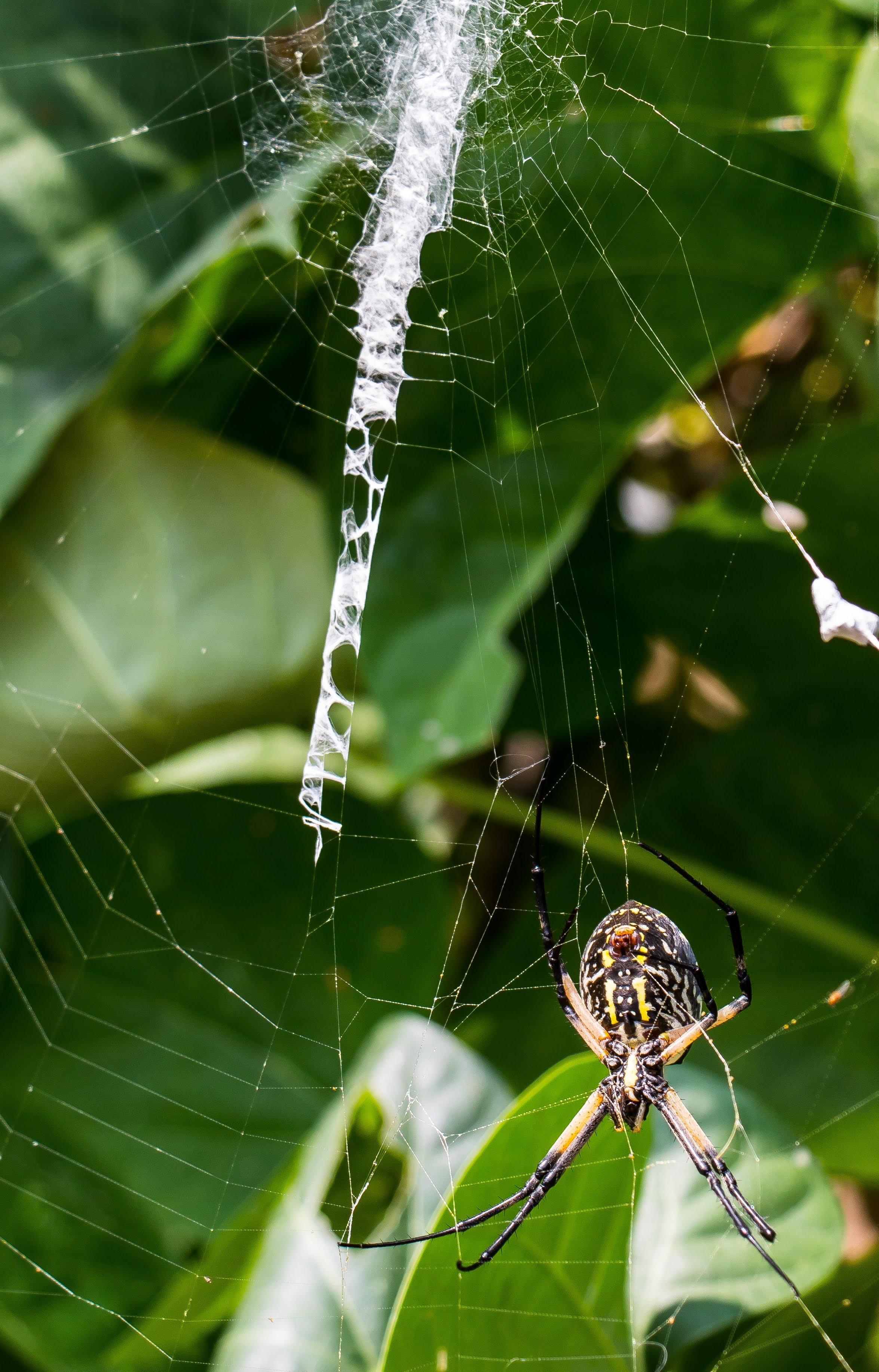Creating a web
Here at Dry Hollow Farm we host a wide and fascinating selection of web-designing spiders:
How are the webs above similar?
How are they different?
Did you know …? Usually you can identify the spider scientific family by studying the pattern of its web!
Many spiders in the orb-weaver family build their webs after dark.
Do you know the scientific term for animals and insects that are most active at night?
NOCTURNAL!
How many bugs can you find caught in this spider’s web we found on our back porch?
Orb-weaver spiders catch as many as 250 insects a day in their webs.
Did you know …? Spiders can spin both sticky and non-sticky thread for their webs. They also have flexible claws on their foot to grip and release the spiderweb threads. This is how they avoid getting caught in their own webs.




